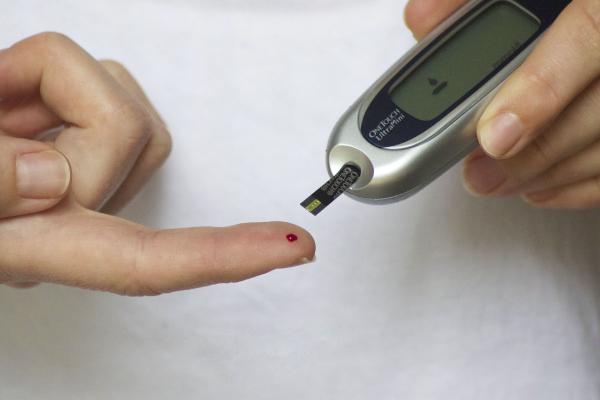The CDC study is a retrospective review of commercial medical claims from two companies before and during the pandemic. Commercial claims are the billing information used to determine insurance payments, copayments, etc. They are usually accurate, but if anything, they may “upcode” diagnostic information to achieve greater revenue. While the claims must be backed by documentation, that documentation is not available. That means information as to the characteristics of the populations, besides their age and gender, is not known. We have no idea how many of the claims reflect individuals with a family history of diabetes, weight issues, and so on.
Individuals with a prior history of diabetes were excluded, and “incident diabetes” was determined by specific codes for diabetes mellitus. Note was also made of those cases of diabetic ketoacidosis or DKA, where there is a dangerous buildup of ketones, a product of metabolism that increases in the absence of sugar metabolism. The presence of ketones is considered the goal of those on an Atkins-like or keto diet. In individuals with diabetes, this is a marker of the severity of illness.
The data
For IQVIA claims
- 80,900 with COVID-19, mean age 12.3, 50% female, 0.7% hospitalized
- Diabetes coded for 0.08% of claims, DKA reported in 48% of those claims
- Prepandemic controls included those with a diagnosis of Acute Respiratory Infection – the most common case being pharyngitis, a sore throat. [2]
- 404,000 controls, mean age 12.3, 50% female, 0.4% hospitalized
- Diabetes coded for 0.03% of claims, DKA reported in 13.6% of those claims
- The incidence of diabetes was 316/100,000 person-years for those with COVID-19 and 118/100,000 person-years in the pre-pandemic controls. The risk of diabetes was 166% more for those with COVID-19 than those with acute respiratory infections
For HealthVerity claims
- 439,000 with COVID-19, age 12.7, 50% female, 0.9% hospitalized
- Diabetes coded for 0.25% of claims, DKA reported in 40% of those claims
- There were no pre-pandemic controls; controls consisted of the same cohort without a diagnosis of COVID-19
- 439,000 controls, mean age 12.7, 50% female, 1.3% hospitalized
- Diabetes coded for 0.19% of those claims, DKA reported in 22% of those claims
- The incidence of diabetes was 399/100,000 person-years for those with COVID-19 and 304/100,000 person-years in the pandemic controls. The risk of diabetes was 31% more for those with COVID-19 than those with acute respiratory infections
There are some significant limitations to the data. The CDC attempts to describe those claims that report Type 1 vs. Type 2 diabetes, but there is no way to verify those claims without lab data. Those with COVID required either a positive PCR test or a diagnostic claim. More importantly, those classified as non-COVID did not necessarily have a negative test. As I mentioned, there was no covariant data, so we do not know how well these groups matched up other than by age and gender. Finally, this was a sample of those with private, commercial insurance. With both the limitations and data in hand, let’s see if we can establish a narrative to explain the findings.
Connecting the data points
The most crucial background information that is unstated is that the stress response will raise your blood sugar. For those with a resilient metabolism, it may not rise to the level of clinical attention, especially if you are not checking blood sugars – after all, the patient has no history of diabetes. For those with a less resilient metabolism, call it that group of “pre-diabetes,” the stress of an illness can alter their glucose metabolism, even to the point of DKA.
There is no long-term data here; we have little idea of how these individuals fared two months after those initial claims – we, in fact, do not know whether their glucose metabolism remained perturbed to the point of a diagnosis of diabetes or whether it returned to a subclinical baseline. So rather than speak about COVID-19 causing diabetes, perhaps we can learn more through the lens of stress causing impaired glucose metabolism to become clinical noticed. That lens tells us
- COVID-19 infections are far more stressful than similar diseases captured as acute respiratory infections. Those stresses manifest in abnormal glucose metabolism and higher rates of hospitalization, at least for some.
- That stress ranged from slightly altering glucose metabolism to the point that it was life-threatening from DKA.
While we can argue about whether COVID-19 “causes” diabetes, we should all be able to agree that it is a more stressful disease – it is not influenza, and we should be mindful of this distinction. COVID-19 illness reveals an altered but clinically unnoticed glucose metabolism. It is the same type of reveal we see in adults with COVID-19 and those with stressful conditions, like sepsis and major surgery. The CDC did not conclude that COVID-19 causes diabetes, but “that it might lead to type 1 or type 2 diabetes through complex and different mechanisms.”
It is why the CDC made two recommendations
“Health care providers should screen for diabetes symptoms in persons aged <18 years with a history of SARS-CoV-2 infection.”
“These findings underscore the importance of COVID-19 prevention among all age groups….”
[1] New York Times January 7, 2022
[2] Pharyngitis 38%, upper respiratory infections 22%, sinusitis 11.8%, influenza 9.3%, tonsilitis 3.1%, “common cold” 2.7% - a mixed bag of disease
Note: Since this article was written a peer-reviewed article in the Journal of Diabetes and Its Complications makes the same point, this is not destruction of pancreatic cells, but a stress response.
Source: Risk for Newly Diagnosed Diabetes >30 Days After SARS-CoV-2 Infection Among Persons Aged <18 Years — United States, March 1, 2020–June 28, 2021, CDC




